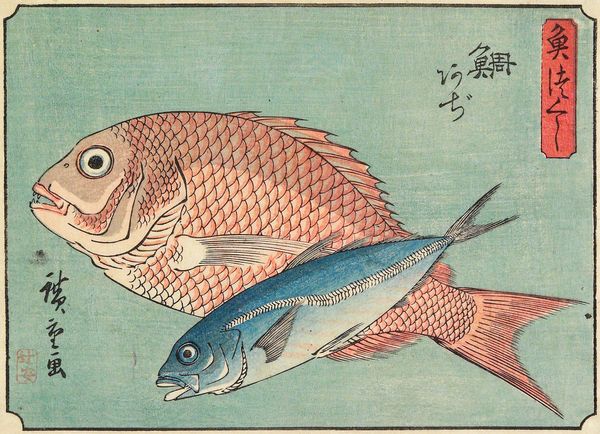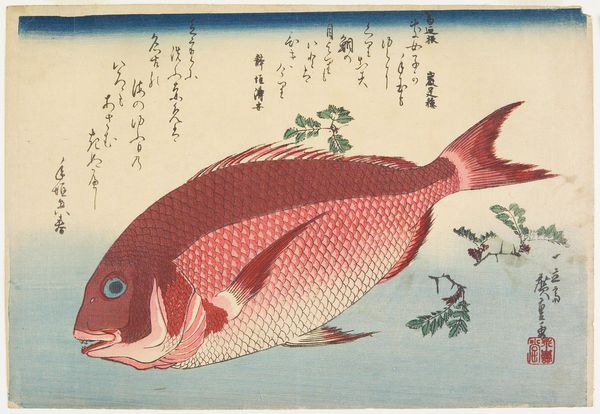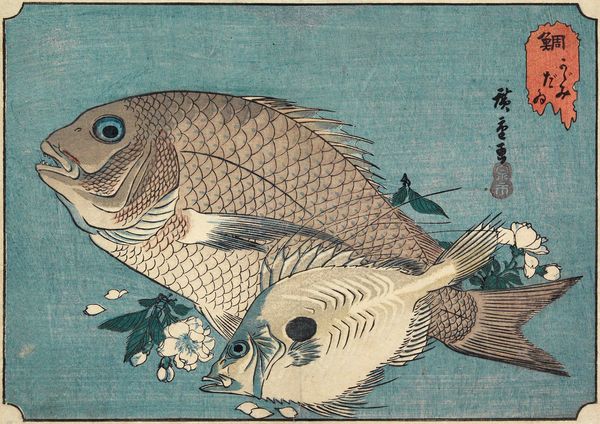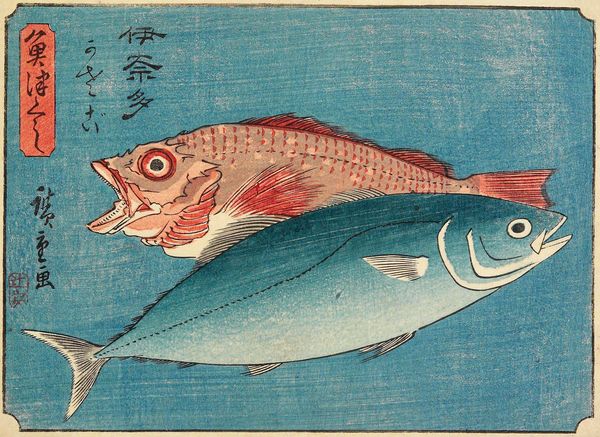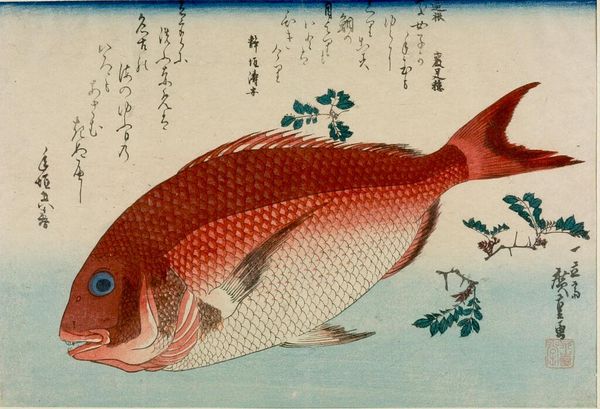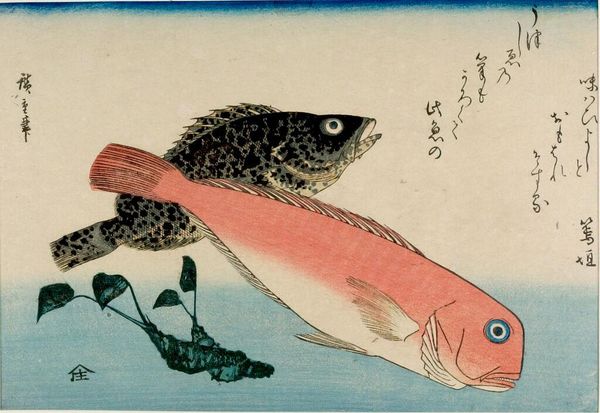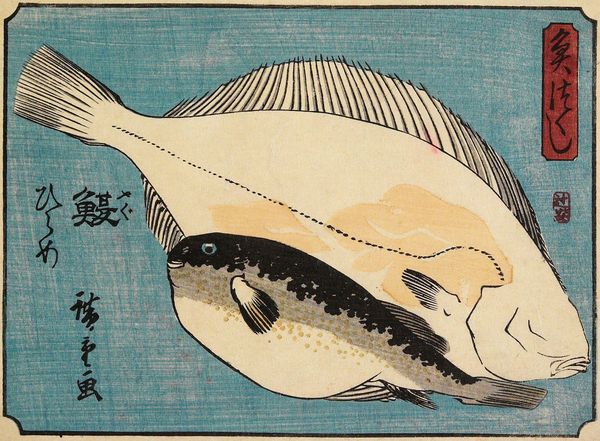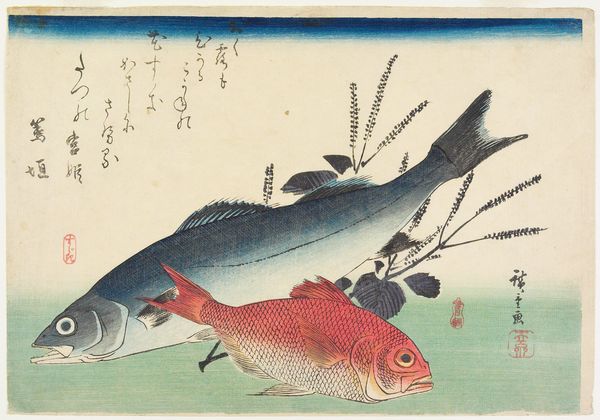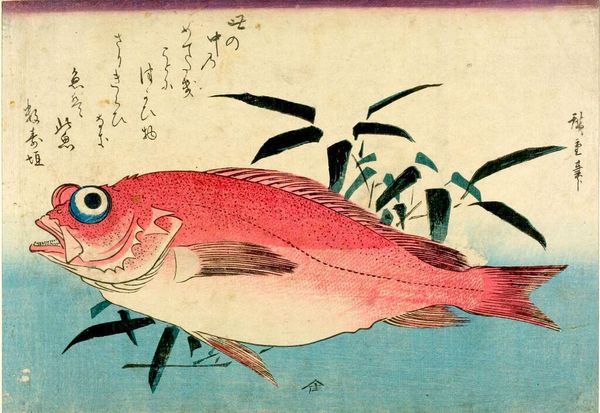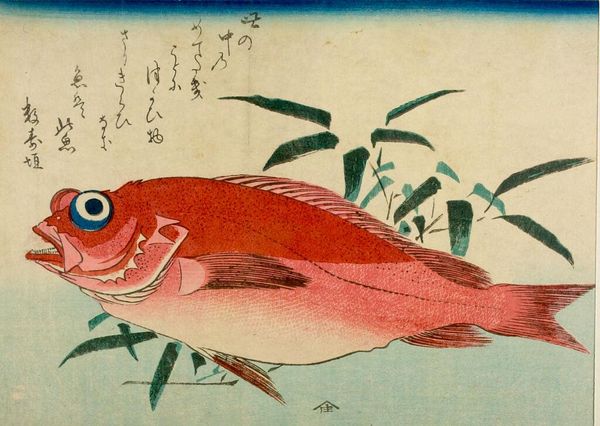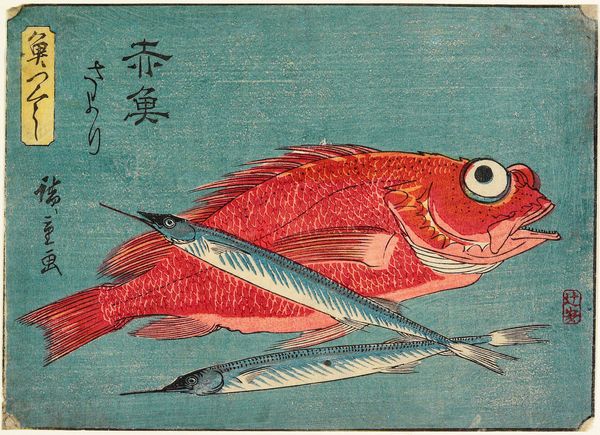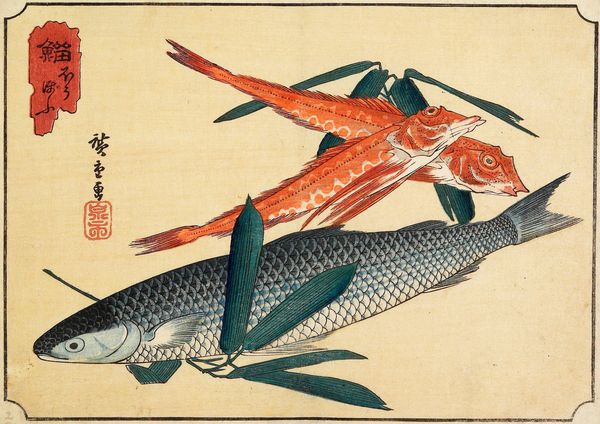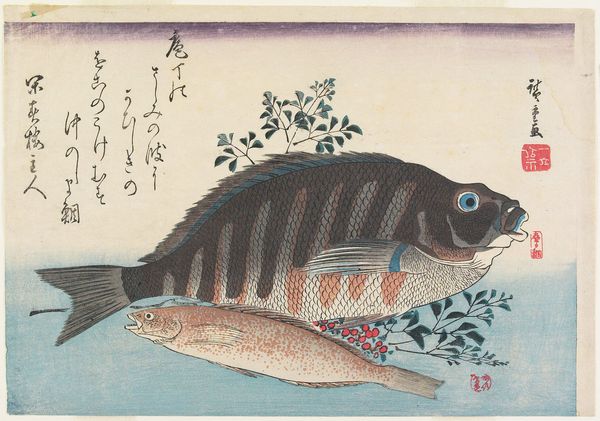
coloured-pencil, print, ink
#
coloured-pencil
# print
#
asian-art
#
caricature
#
ukiyo-e
#
japan
#
personal sketchbook
#
ink
#
coloured pencil
#
watercolour illustration
Dimensions: 5 7/8 × 8 1/4 in. (15 × 20.9 cm) (image, horizontal chūban)
Copyright: Public Domain
Curator: This woodblock print, "Gilthead and Tilefish," was created by Utagawa Hiroshige around 1835 to 1839. It’s rendered with ink and colored pencil. What strikes you first about it? Editor: Well, immediately, the stylized presentation of these two fish, they appear almost as characters in a play rather than specimens of marine life. Their oversized eyes lend an almost comical quality to the piece. Curator: Exactly! Hiroshige's playful side is definitely showing. His ukiyo-e prints weren't just picturesque landscapes. He had a keen eye for detail and a bit of a mischievous streak. You can almost feel him chuckling as he drew them. What about the stark contrast between the grey scale detail on the upper fish and the simpler, softer tone of the lower fish? Editor: I notice that, yes. That stylistic divergence between the tilefish, or the rosy one at the bottom, and the darker gilthead above might imply differing social statuses. Consider the hierarchy inherent in Japanese society during the Edo period—could this artistic choice subtly critique or comment on those rigid structures? Curator: Ooh, interesting reading of it. It could also be a testament to Hiroshige's acute awareness of color and composition, but I appreciate that perspective of inherent power dynamics at play. Even in his sketches, there's this vibrant energy. I love how the bodies intersect, not competing for space but harmonizing in it. Editor: Absolutely. And the way the print foregrounds these aquatic creatures draws attention to our ecological relationships. It’s quite a reminder of human interdependence with, and occasional exploitation of, natural resources. Curator: And this would have been a personal sketchbook entry, no less, showcasing his informal observation and humor. It seems that something like a still life can tell a story beyond its subjects! Editor: I agree, looking at this print allows us to appreciate how even seemingly straightforward art offers a multitude of complex cultural reflections, both deliberate and unconscious. Curator: A bite-sized dive into the complexities of Japanese society, all through the guise of a simple fish dinner, perhaps? It seems everything circles back to food eventually. Editor: Well said! I’m glad we surfaced more than just the obvious details in Hiroshige’s composition.
Comments
No comments
Be the first to comment and join the conversation on the ultimate creative platform.
